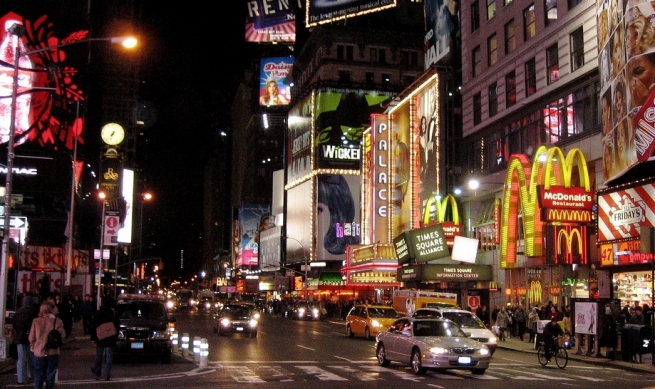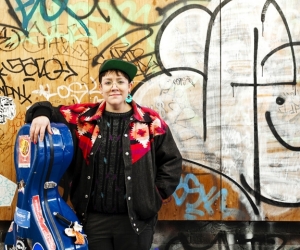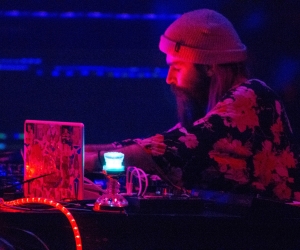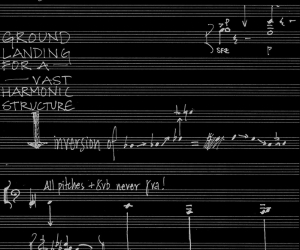
Max Neuhaus’ permanent sound installation, Times Square (1977–1992; 2002–present), has become a place that I visit every time I find myself in New York City. There is something about revisiting it, spending some time standing on the pedestrian traffic island between Forty-Fifth and Forty-Sixth Streets listening to the clatter of footsteps pace across the concrete, the glissandi of squealing brakes rushing from stoplight to stoplight, the commercial music, and the whirring of air as it rushes past both my coat and the surrounding architecture, and hearing it all framed by that singular spectral drone coming up from below my feet. I take stock of the intimacy that emerges between myself and the otherwise cacophonous place. And then, I fall back into the flow of pedestrian traffic, cross a street or two, and disappear from the sound, which performs its long slow decrescendo for me.
The installation’s sound is constant, but sometimes you catch Times Square on a particularly quiet day, and the spectral space surrounding the drone just seems to flicker. On other occasions, I can barely sift through all the commotion to discover it—to attune my ear to its colour.
I often idealize the potential for its discovery, hoping to catch a tourist or midtown worker hesitating and showing the slightest sign of double-think. The passerby who merely questions, “Is that the sound of Times Square?” would provide an instance of the installation at its most (subtly) affecting. Yet it continues to affect people like me, who know exactly what to expect. I remember reading Alex Potts’ account of his experience with the piece: “I spent a good deal of time wandering one evening around the wrong end of Times Square . . . at times imagining I was hearing the work. I only happened to come across it just as I had given up hope of ever finding it.” No matter how many times I find it, the work remains an engagement with aural discovery: I know where to stand and listen but I must discover an ability to hear it. A fundamental disconnection exists between the location of my feet and the location of my listening, attentive mind; and the sound instigates an awareness of this disconnection. The sound is always something to find, to hear, in relation to where I am in Times Square. As I search, I realize that the sound isn’t the moving target—I am. I am what mediates ear and foot. As I listen, I wonder how many times Alex discovered himself that night as he listened, asking time and time again, “Is that sound Times Square?”
Composer John Luther Adams states that “the space we inhabit is place.” Regarding Times Square, my ability to inhabit and re-inhabit the work reifies the place it becomes, bounded and limited through the sound’s spectrum. Neuhaus’ installation is a reason to remember having been there. And each time I return, I find myself again, by discovering the minimal difference between where my feet are and where my ear is.
Image: Times Square, NYC. Image by: Kate Haskell, licensed under a Creative Commons Attribution 2.0 Generic License.


